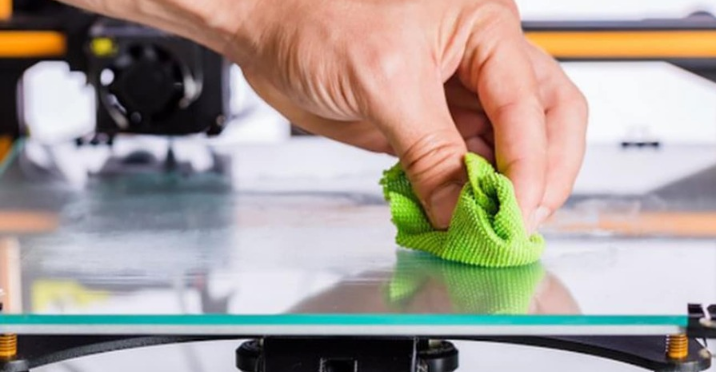
Cleaning a 3D printer bed is crucial for achieving successful prints and maintaining the longevity of your printer. Here are some detailed steps on how to clean a 3D printer bed, depending on the type of bed surface you have.
General Cleaning Supplies
- Isopropyl alcohol (70% or higher)
- Lint-free cloths or paper towels
- Acetone (for certain surfaces like PEI)
- Warm, soapy water
- Plastic scraper or spatula
Steps for Cleaning Different Types of 3D Printer Beds
1. Glass Bed
Daily Cleaning:
- Cool Down the Bed:
- Allow the bed to cool to room temperature to avoid thermal shock.
- Wipe with Isopropyl Alcohol:
- Apply isopropyl alcohol to a lint-free cloth.
- Wipe the bed thoroughly to remove any residue or grease.
Deep Cleaning:
- Remove the Bed:
- If possible, remove the glass bed from the printer.
- Warm, Soapy Water:
- Wash the bed with warm, soapy water to remove any adhesive residues.
- Rinse thoroughly with clean water.
- Dry Completely:
- Dry the bed completely with a lint-free cloth to prevent water spots.
[elementor-template id=”4330″]
2. PEI Sheet Bed
Daily Cleaning:
- Cool Down the Bed:
- Let the bed cool down to avoid damage.
- Wipe with Isopropyl Alcohol:
- Use a cloth with isopropyl alcohol to clean the surface.
Deep Cleaning:
- Use Acetone:
- Apply a small amount of acetone to a lint-free cloth.
- Wipe the bed to remove stubborn residues and restore the PEI surface.
- Avoid Excessive Scrubbing:
- Do not scrub too hard to avoid damaging the PEI sheet.
3. BuildTak or Similar Surfaces
Daily Cleaning:
- Cool Down the Bed:
- Allow the bed to cool before cleaning.
- Wipe with Isopropyl Alcohol:
- Clean the surface with isopropyl alcohol on a cloth.
Deep Cleaning:
- Warm, Soapy Water:
- Gently wash the surface with warm, soapy water if needed.
- Avoid Harsh Chemicals:
- Do not use acetone or other harsh chemicals that can damage the BuildTak surface.
[elementor-template id=”4331″]
4. Magnetic or Flexible Build Plates
Daily Cleaning:
- Cool Down the Bed:
- Ensure the bed is cool before cleaning.
- Wipe with Isopropyl Alcohol:
- Clean the surface using isopropyl alcohol on a cloth.
Deep Cleaning:
- Warm, Soapy Water:
- Remove the build plate and wash it with warm, soapy water.
- Rinse and Dry:
- Rinse thoroughly and dry with a lint-free cloth before reattaching it to the printer.
Additional Tips
- Regular Maintenance:
- Regularly clean the bed to maintain adhesion and print quality.
- Avoid Abrasive Materials:
- Do not use abrasive pads or materials that can scratch the bed surface.
- Check for Residue:
- After each print, check for and remove any filament residue or debris.
- Use Adhesives Wisely:
- If you use adhesives like glue sticks or hairspray, clean them off periodically to prevent build-up.
By following these steps and tips, you can ensure your 3D printer bed remains clean, promoting better print adhesion and quality. Regular maintenance will also extend the life of your printer bed.
Related Conten: https://www.m-dtg.com/service/3d-printing/
 DTG Mould Trade Process |
|
| Quote: | According to sample, drawing and specific requirement. |
|---|---|
| Discussion | Mold material, cavity number, price, runner, payment, etc. |
| S/C Signature | Approval for all the items. |
| Advance | Pay 50% by T/T |
| Product Design Checking | We check the product design. If some position is not perfect, or can not be done on the mould, we will send customer the report. |
| Mold Processing | Send report to customer once each week |
| Mold Testing | Send trial samples and try-out report to customer for confirmation |
| Mold Modification | According to customer’s feedback. |
| Balance Settlement | 50% by T/T after the customer approved the trial sample and mould quality. |
| Delivery | Delivery by sea or air. The forwarder can be designated by your side. |
 |
|

